Whether you believe in fate or not, when you hear how Wirral ceramist Jacob Chan met his first slab of gleaming wet clay, it’s hard not to wonder whether the stars were aligned above Wirral Grammar School that day.
“I wasn’t particularly good at art,” Jacob says, as we chat in his parents’ Eastham living room – Chan’s works animating the space with its signature blend of drama and beauty. “I was studying A level maths in sixth form and was bored, so I left the classroom and wandered down the corridor.”
Jacob’s impromptu stroll took him into the art studio, where Oxton-based artist Emma Rodgers was midway through a workshop (we’ll be chatting to Emma in our next issue). Emma was showcasing her ceramic wizardry to rapt A level art students desperate to learn from the master, and mould something magnificent.
“I’d never touched clay. I didn’t even know what ceramic was,” Jacob admits. “But I was instantly hooked. As soon as I felt it in my hands I loved it. It felt right.”
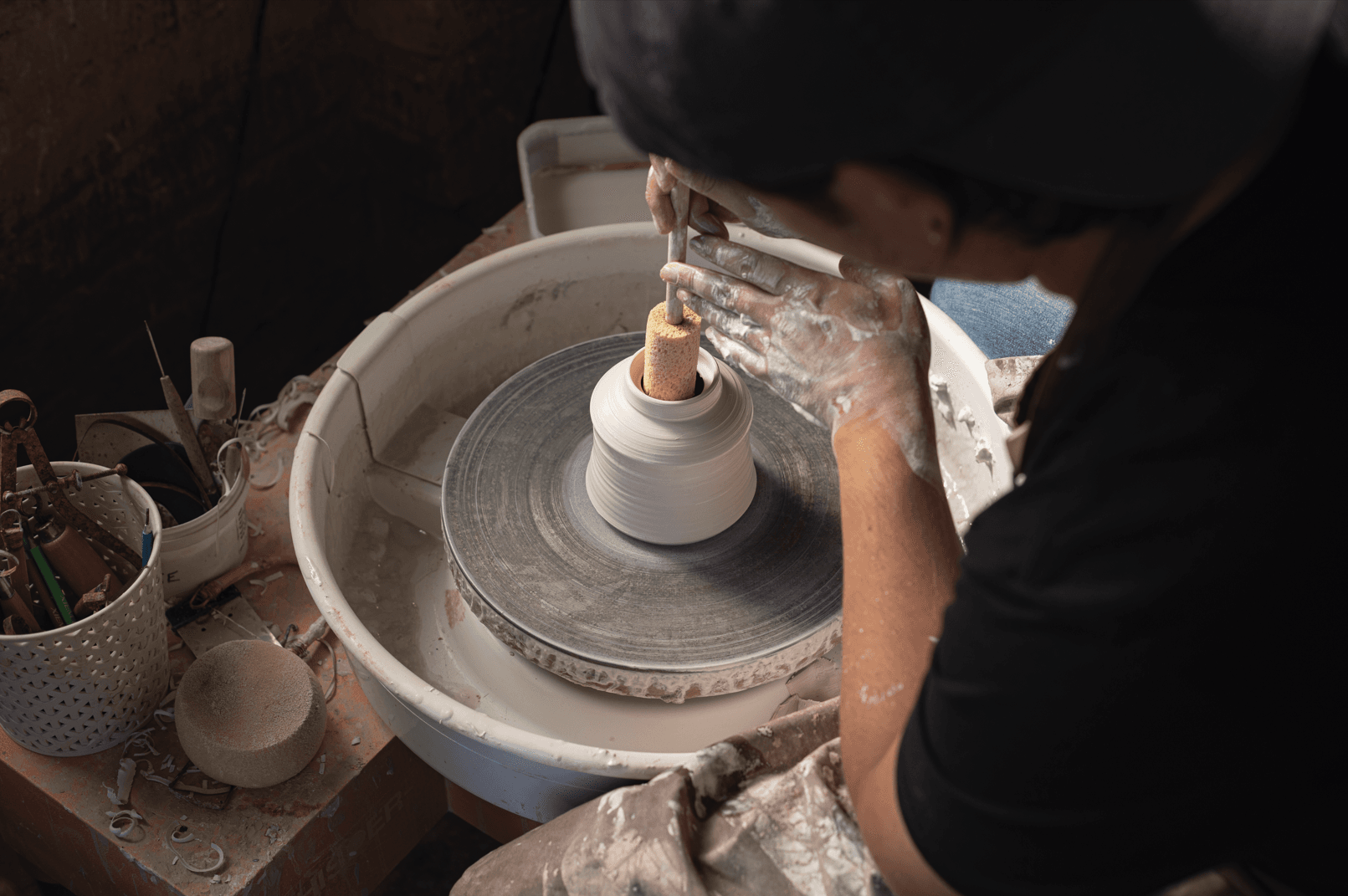
Jacob laughs as he recalls that first (possibly fateful) encounter. “I bombarded Emma with questions. I just wanted to know everything about it,” he says. “I loved the way it was so flexible, and so forgiving. You could make any form you liked, rip it up and start again.”
Eventually, perhaps in an effort to stop the interrogation and get on with her class, Emma invited Jacob to visit her studio. The visit led to Emma taking Jacob on as an apprentice; mentoring the newly-enrolled A level art student through his studies.
“I was never really encouraged to believe that you could have a career in art,” Jacob says. “Schools just don’t push it enough. But Emma made me realise that if you have a real passion for something you should just follow your heart.”
A degree in ceramics at Carmarthen University followed, after which Jacob won a student award which gave him an exhibition stand at the prestigious Art In Clay show in Hatfield.
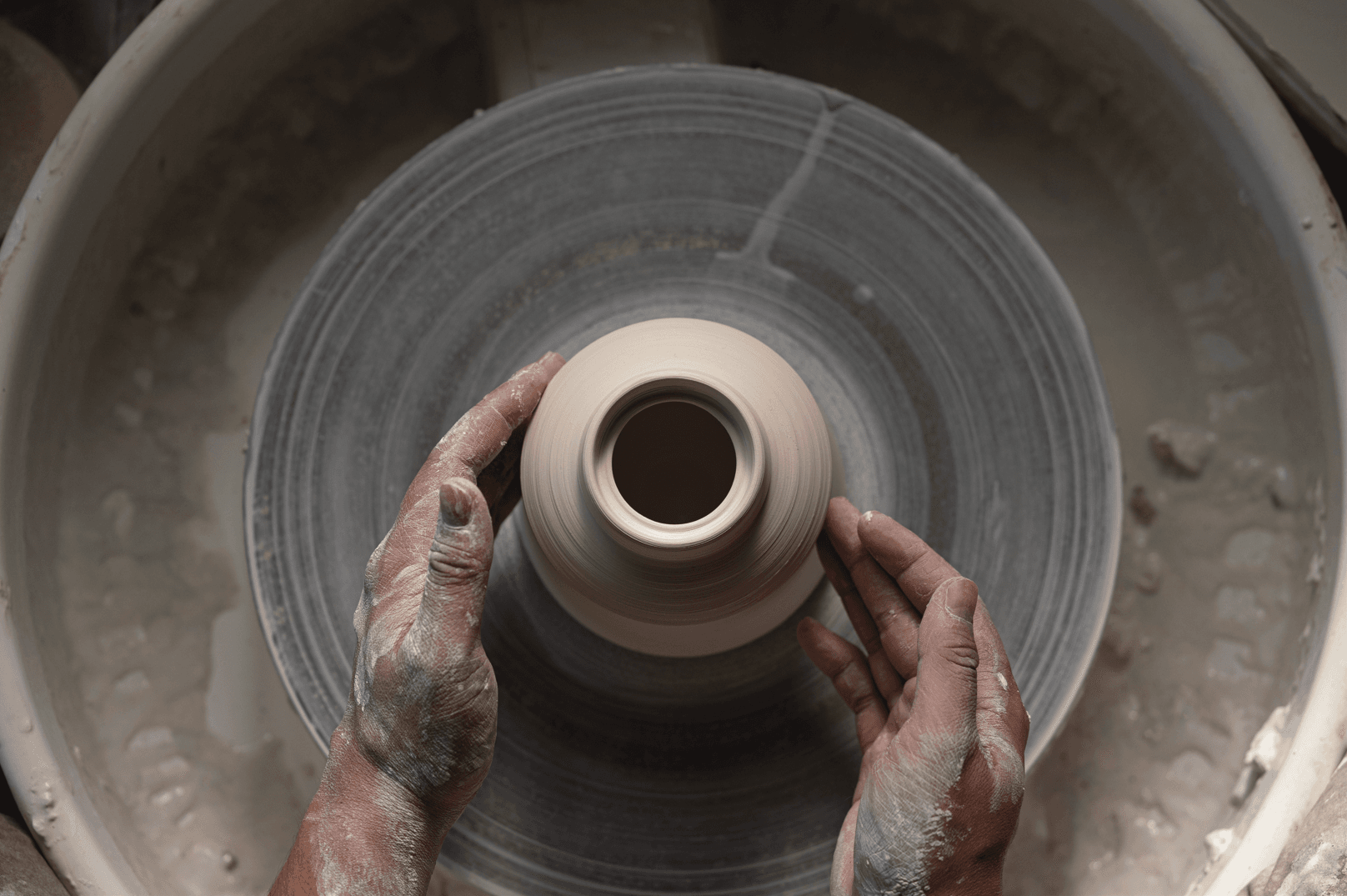
“It was only then that I started to develop my own style,” Jacob admits. “Emma taught me to sculpt, uni taught me how to throw. I started combining the two,” he says. At the same time, Jacob was beginning to blend together two other elements into his work: his Chinese and English heritage.
“At home, we spoke English. Moving here from Hong Kong as a child, Dad was always told he had to assimilate if he was to be accepted. So we never really celebrated the Chinese side of our family’s culture,” Jacob admits.
“I honestly never even thought about it until I was away at university. But when I started looking into both our family’s story, and the history of ceramics in China, it was like a light went off above my head.”
Now, rampaging dragons, stately foo dogs and playful koi fish ignite Jacob’s work with energy and powerful oriental symbolism. The slips and oxides contain sand, slate and broken pottery collected from around the coastline of the north west, to represent the fact that Jacob is rooted to the land he was born in, too.
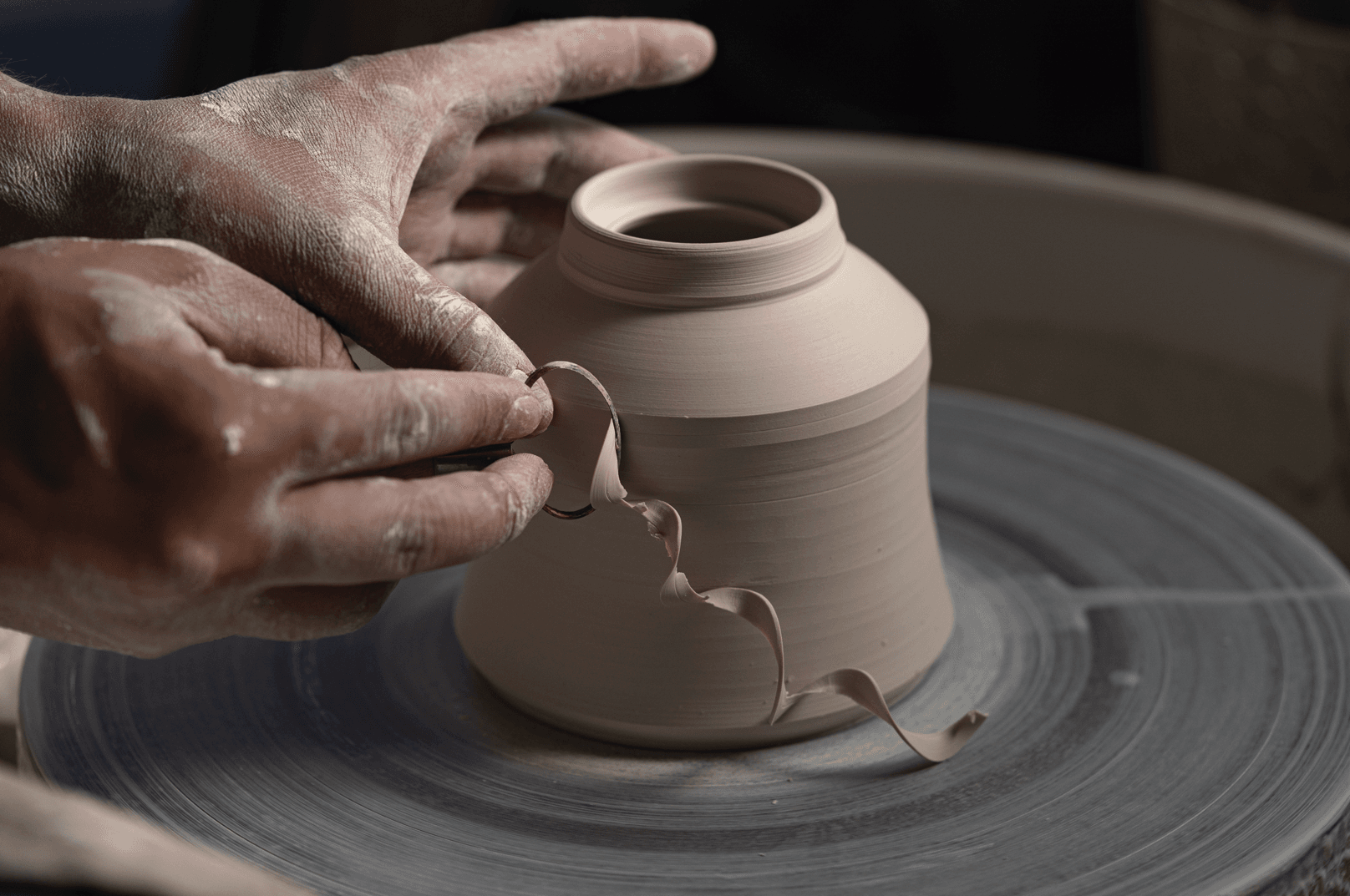
It was this bold collision of creative tectonic plates that saw Jacob reach the finals of Channel 4’s cult reality series The Great Pottery Throw Down a couple of years ago: “It was one of the hardest, but best things I’ve ever done,” Jacob says. “It opened up so many doors for me.”
With the support of his family and his ceramicist partner Rosie Williams, Jacob steadily built up his studio – a series of three connected buildings in the garden of his parents’ house.
“I’ve ploughed everything into this,” he says as we take a tour of his ceramics HQ: from clay-splatted creation space, via the fierce, heat-scorched maw of his kiln (“I built this myself,” he says proudly) to a gleaming white gallery, shelves lined with delicate ginger jars and ornate vases glowing in the late summer sun.
“This is all I’ve ever wanted to do,” Jacob says. “It’s hard work. I can be firing for 14 hours one day and travelling to London early the next morning to meet a gallery owner. I don’t have an agent, it’s just me.”
Turning lifeless clay into animated mythical beasts might seem daunting to most of us, but for Jacob, the real challenge is keeping the wheels of his business spinning.
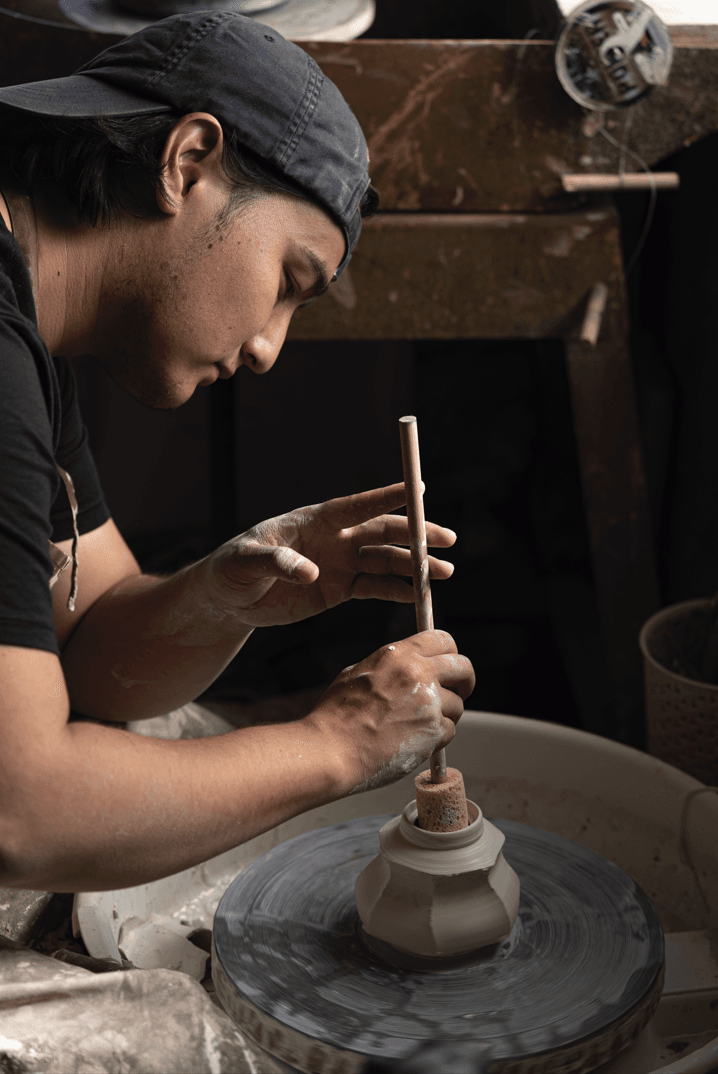
“I get wobbles sometimes,” Jacob admits. “I can go for months when the creativity doesn’t flow. Expenses are high, gas prices have doubled and most of my time is spent answering emails, but that’s just what you have to do to keep a business going,” he says.
“When you’re throwing some of the bigger shapes, like the moon jars, if you’re worrying about the amount of gas you’re going to need to fire it, you’ll never be able to make them stay up.”
Centrestage in Jacob’s back garden gallery is his new commission for Williamson Art Gallery in Birkenhead, to mark Wirral’s tenure as Borough of Culture in 2024 – a gleaming foo dog complete with delicate fan tail, shimmering in 24 carat gold.
“I remember visiting the gallery as a child,” he says, pointing out the sculpture’s plinth, decorated in painted vignettes of Jacob holding his mother’s hand as he wanders around the galleries.
“It’s a real honour to have a piece in the Williamson’s permanent collection,” Jacob beams. “Ceramics are a huge part of Birkenhead’s history, so it’s nice to be included in that story."
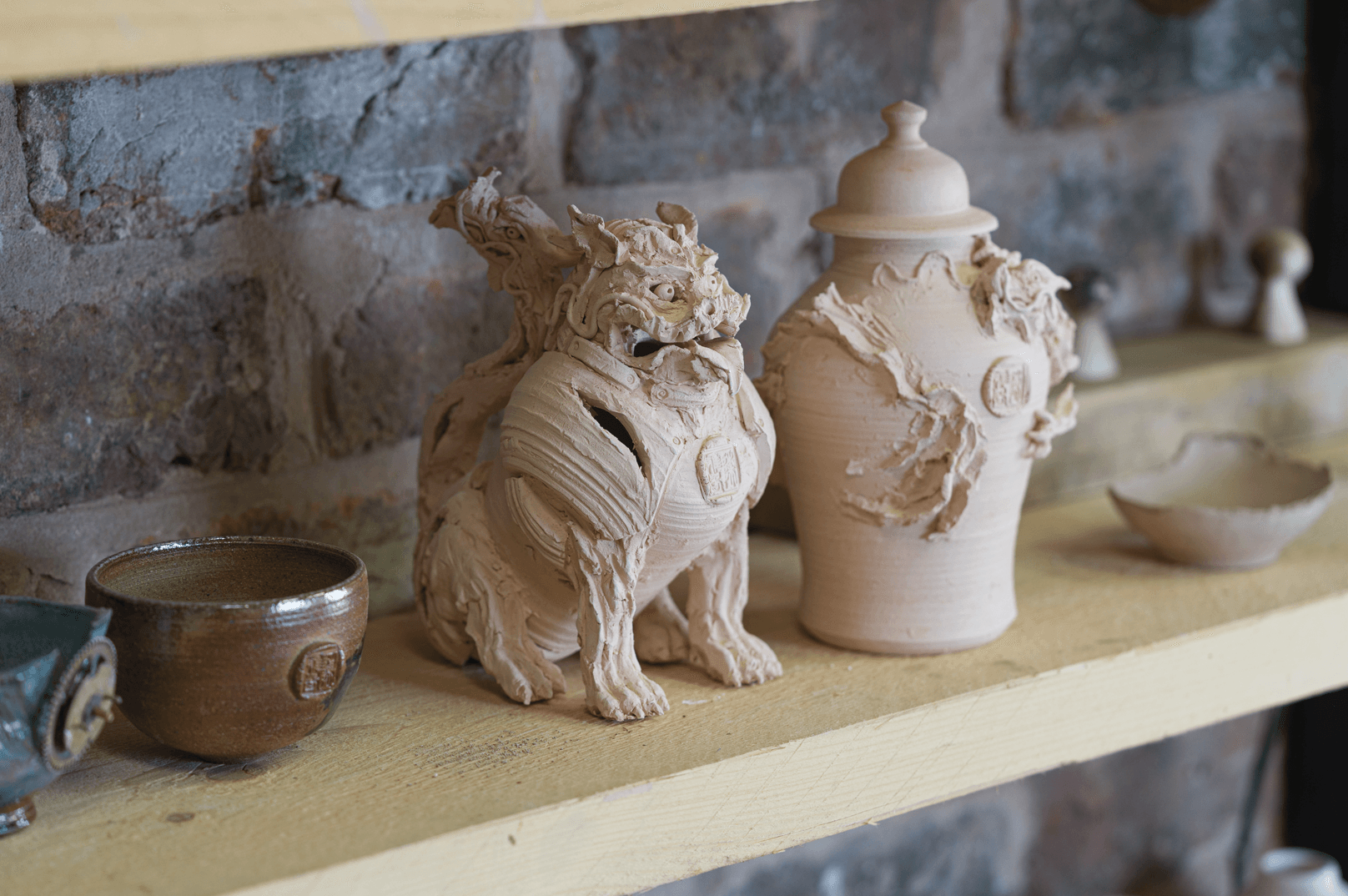
Jacob will be moving soon. “But,” he says, as he points over the garden wall, “not too far away. We’ve bought a house 15 doors down the road,” he laughs. “There’s an aviary in the garden, I’m sure I can put that to good use!”
Unlike his possessions, Jacob’s career has already travelled much further than his Left Bank home. Galleries across the UK, and further afield, are clamouring to show his work, and private collectors are lining up to secure a commission.
December sees his first solo show, Forty, a collection of palm sized porcelain teapots each decorated with a hand sculpted dragon: the pieces have been snapped up before the exibition opens, in Lymm's Blackmore Gallery.
“Of course I could have moved to London, or set up a studio in Manchester. But why would I want to? This is where I’m from. All I need is right here.”
A potted history of ceramics
In China
Around 5,000 BCE, tribes along the Wei river in central China were decorating pottery with ropes and shells. Thanks to the region’s clay-rich soil, the craft rapidly evolved – the Tang dynasty (618-907 CE) saw the introduction of delicate and glowing porcelain ware, which reached its pinnacle during the Ming dynasty of the Middle Ages. Symbols – animals, flowers, mountains – have been used for thousands of years, representing good luck, strength and longevity. Dragons, the most popular of all, symbolise goodness, strength and harmony.
On Merseyside
A busy ceramics industry was flourishing on the banks of the Mersey in 1700, with a series of small ‘pothouses’ producing glazed earthenware known as Delftware, inspired by Netherlands-based ceramicists.
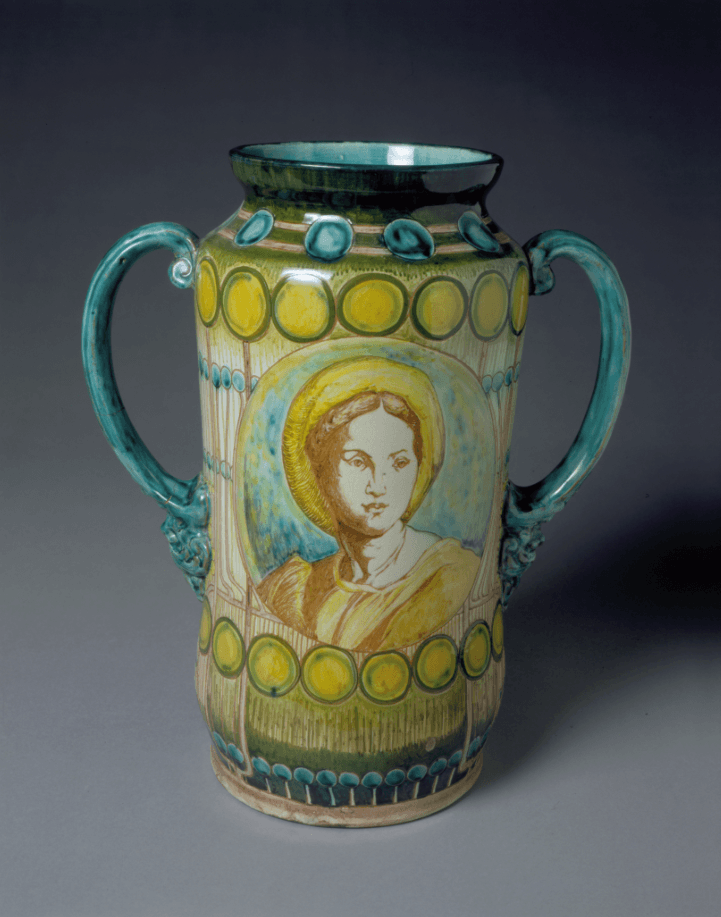
Birkenhead’s legendary Della Robbia pottery was founded in 1894. Heavily influenced by the prevailing Arts and Crafts Movement, works from the Hamilton Square-based studio also harked back to styles popular in fifteenth-century Florence. Today, Della-Robbia’s lavishly decorated pieces (pictured above) are highly sought after, and can be found in The Met in New York, and the V&A in London. But the Williamson Art Gallery, right here, is home to the world’s biggest collection.
Image credits: Antoni Ferguson
See Jacob Chan’s work and learn more about him through his website